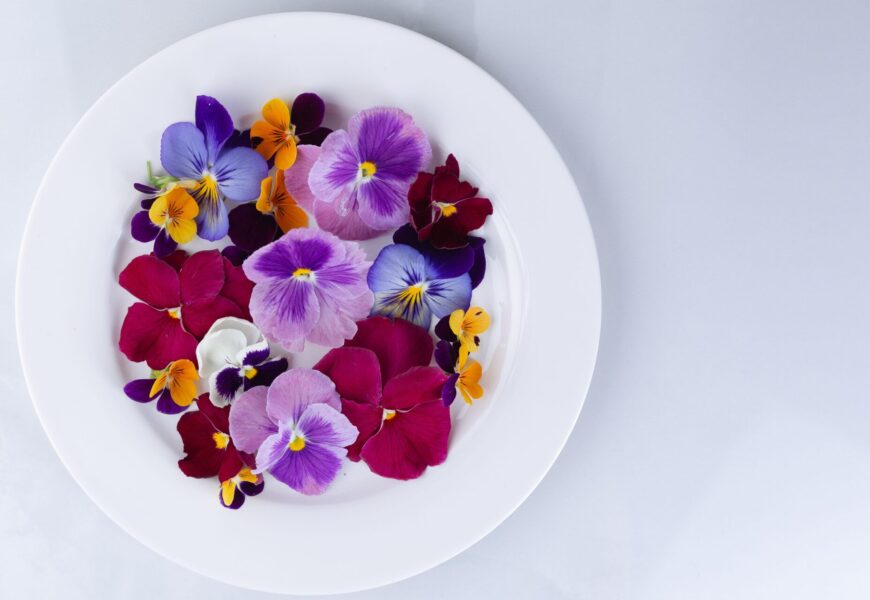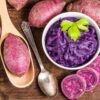Edible flowers, which have been gracing our plates and palates for centuries, add both visual appeal and unique flavors to our culinary experiences.
These delicate blooms have woven themselves into various cultural traditions, from Asian stir-fries adorned with chrysanthemum petals to European salads dressed with vibrant nasturtiums.
However, beyond their aesthetic charm, many are left wondering, are edible flowers good for health?
In this blog post of 15 edible flowers and their nutritional health benefits, we aim to uncover the naturally occurring goodness that makes these floral additions not just a feast for the eyes but potentially a boon for our well-being as well.
What Makes Edible Flowers Nutritious
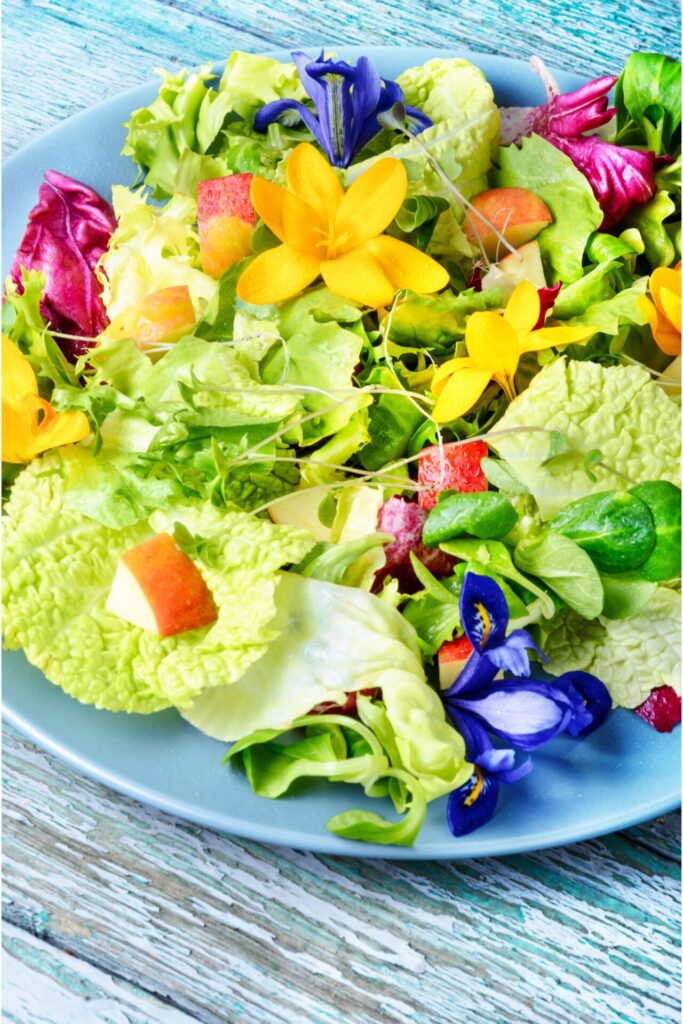
The allure of edible flowers goes beyond their delicate appearance and unique flavors; they are naturally brimming with a surprising array of nutrients.
Picture them as tiny yet potent treasures bestowed upon us by nature.
Within these blossoms, one can find a rich tapestry of vitamins, minerals, and antioxidants, all of which have the potential to contribute positively to our health.
For instance, the petals of roses are not just visually stunning but also rich in vitamin C, known for its immune-boosting properties.
Similarly, marigolds, with their warm golden hues, offer anti-inflammatory compounds that may aid in soothing various ailments.
It’s worth noting that the vibrant colors often found in edible flowers hint at the presence of bioactive compounds like anthocyanins, which have been associated with a range of health benefits.
The beauty of it all lies in the fact that these nutrients are not just good for you; they are also presented in a visually pleasing and enticing form.
This harmonious fusion of nature’s artistry and nutrition makes edible flowers not only a delightful addition to any dish but also a potential source of well-being that should not be underestimated.
18 Edible Flowers
Rose
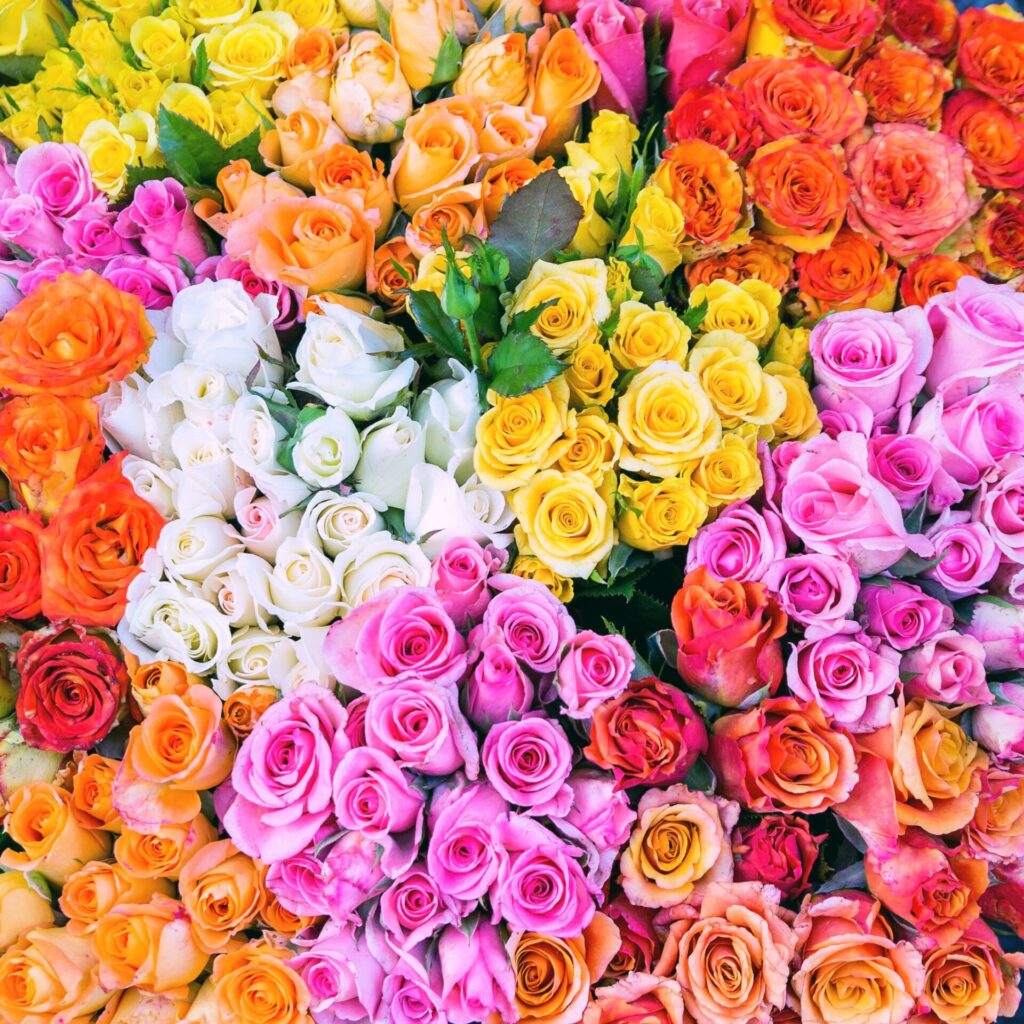
Roses aren’t just romantic; they’re also delightful edible flowers that can add both flavor and flair to your culinary creations.
These edible roses come in various colors, with petals ranging from deep reds to delicate pinks.
The edible rose petals have a subtly sweet taste, making them a perfect addition to salads, desserts, and even beverages.
Not only are they visually appealing, but edible roses also offer health benefits.
Packed with antioxidants, vitamins, and natural compounds, edible rose petals contribute to overall well-being.
Their therapeutic properties extend beyond the kitchen, as rose-infused teas are known for promoting relaxation and reducing stress.
Marigold

Beyond their vibrant golden and orange hues, marigolds are not just eye-catching flowers; they are also edible wonders with unique flavors.
These edible flowers bring a slightly tangy and citrusy taste, making them a versatile addition to both sweet and savory dishes.
Marigold petals, often referred to as “poor man’s saffron,” can be used as a cost-effective saffron substitute to add color and flavor to rice dishes.
Rich in antioxidants and anti-inflammatory compounds, marigold flowers contribute to the health aspect of your meals.
Their sunny appearance isn’t just for show; it reflects the positivity they can bring to your plate and your well-being.
Nasturtium
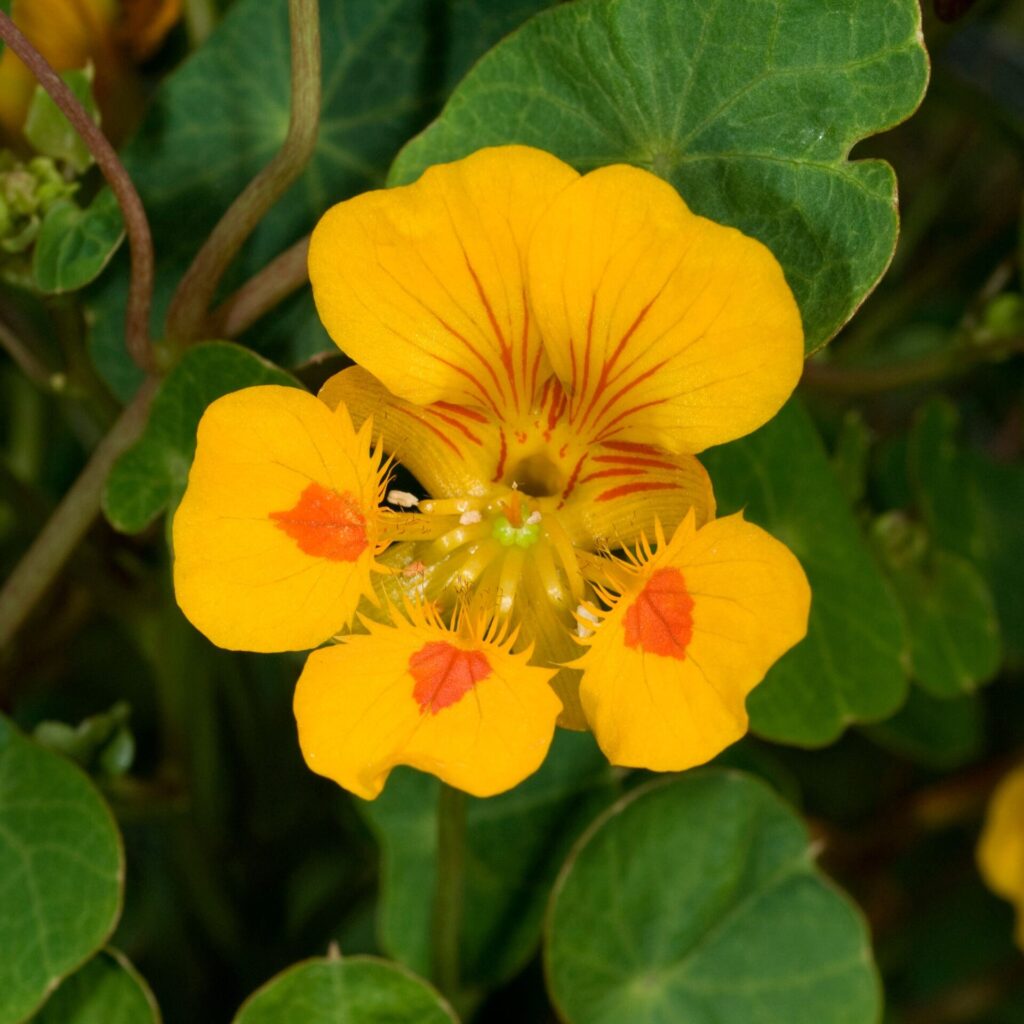
Nasturtiums, with their vibrant colors and peppery flavor, are not only a feast for the eyes but also a treat for the taste buds.
These edible flowers come in shades of orange, red, and yellow, bringing a lively touch to salads, sandwiches, and appetizers.
Nasturtium leaves and flowers are both edible, adding a zesty, slightly spicy kick to your dishes.
Apart from their culinary appeal, nasturtiums boast nutritional benefits; they are a source of vitamin C and possess natural antibiotic properties.
Incorporating these eatable flowers into your meals not only enhances the visual appeal but also contributes to a nutrient-rich and flavorful dining experience.
Lavender

Lavender, often associated with soothing aromas, is also an unexpectedly delightful addition to the list of edible flowers.
With its distinct floral flavor, edible lavender can elevate both sweet and savory dishes.
Imagine infusing your desserts with a subtle hint of lavender or incorporating it into a savory dish for a unique twist.
The purple edible flowers not only offer a fragrant culinary experience but also bring potential health benefits.
Lavender is known for its calming properties and may aid in reducing stress and promoting relaxation.
So, next time you’re looking to add a touch of elegance and tranquility to your meals, consider the versatility of edible lavender.
Violet
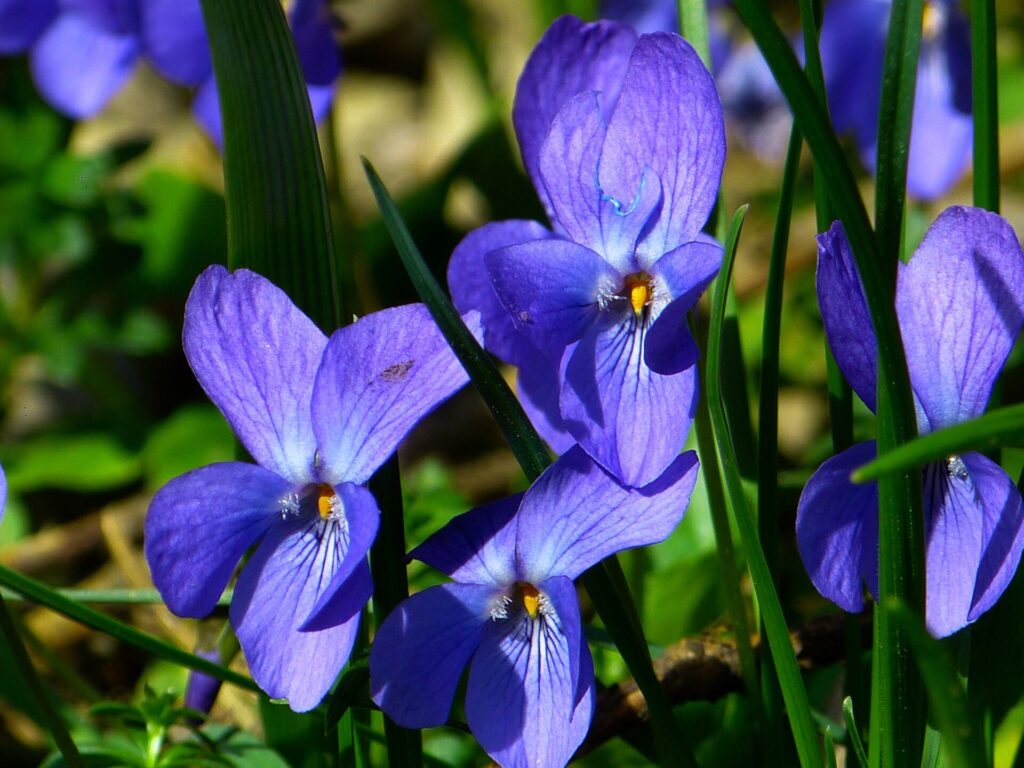
Violets, those dainty and vibrant purple edible flowers, are not only a feast for the eyes but also a treasure trove of nutrition.
Edible violet flowers belong to the family Viola, and they are brimming with health benefits.
These petite blooms boast anthocyanins, antioxidants that lend them their distinctive purple hue and offer anti-inflammatory properties.
Consuming violet flowers may contribute to overall wellness by combating oxidative stress.
Beyond their visual appeal, incorporating these edible flowers into your salads or desserts not only adds a touch of natural beauty but also introduces a subtle earthy flavor that elevates your culinary experience.
Dandelion
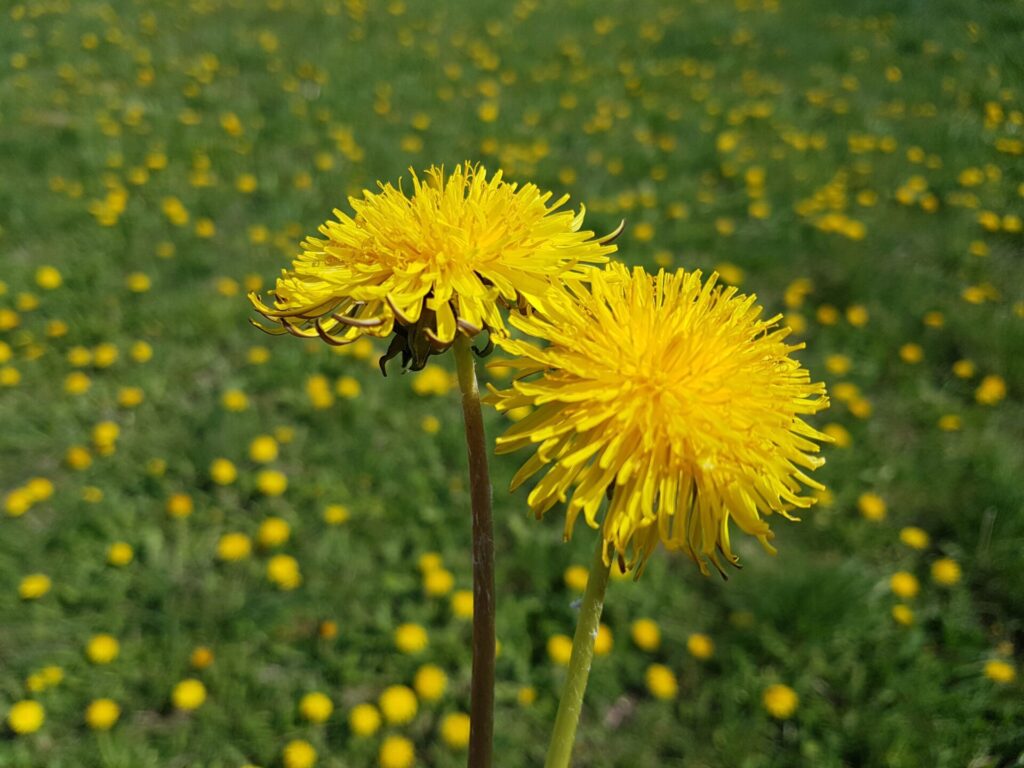
Dandelions, often dismissed as garden invaders, have a secret: their yellow edible flowers are a hidden gem in the realm of eatable flowers.
The bright blossoms of the dandelion, rich in vitamins A and C, offer more than just a burst of color in your backyard.
Edible dandelion flowers contribute to your well-being by supporting skin health and providing essential minerals like iron and calcium.
Traditionally known for their role in aiding digestion, these flowers can be incorporated into your diet, adding both nutritional value and a mild, slightly sweet flavor to your culinary creations.
So, before you pluck them from your garden, consider the nutritious possibilities these edible flowers bring to your plate.
Calendula

Calendula, with its cheerful orange or yellow petals, not only brightens up gardens but also brings a ray of sunshine to the world of edible flowers.
Edible calendula flowers, belonging to the marigold family, are celebrated for their numerous health benefits.
These blooms contain compounds that may promote skin healing and possess anti-inflammatory properties.
When included in your diet, either as a garnish or an ingredient, calendula flowers offer a burst of color and a subtle peppery flavor.
Beyond their aesthetic appeal, the nutritional richness of these edible flowers makes them a delightful and health-conscious addition to your meals.
Chrysanthemum

Chrysanthemums, those vibrant and eye-catching edible flowers, not only bring a burst of color to your plate but also boast an array of health benefits.
Rich in essential vitamins and minerals, including vitamin K vital for bone health, these edible flowers offer more than just ornamental appeal.
Incorporating chrysanthemum petals into your culinary creations introduces anti-inflammatory properties, potentially benefiting joint health.
Whether sprinkled on salads or steeped in teas, these edible flowers contribute not only a delightful flavor but also nutritional goodness that goes beyond their visual charm.
Sunflower
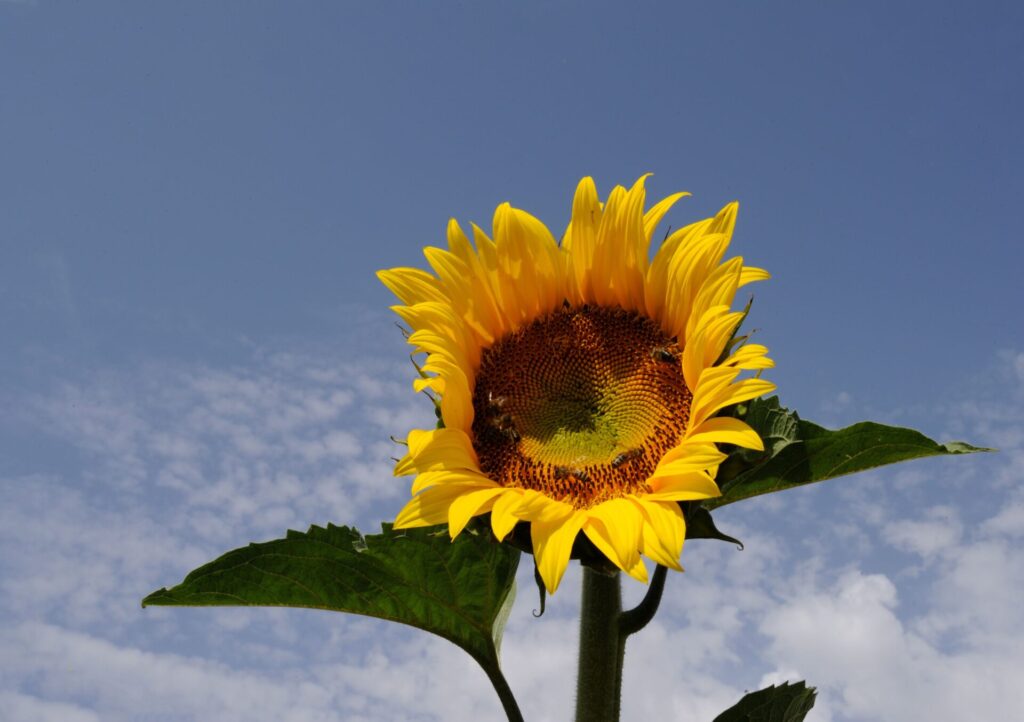
Sunflowers, recognized for their towering presence and radiant yellow petals, go beyond mere visual appeal—they also offer edible flowers with noteworthy health benefits.
The edible flowers of the sunflower, often overshadowed by the seeds, are rich in vitamin E, a potent antioxidant known for its skin-protecting properties.
Incorporating sunflower petals into your dishes not only adds a burst of color but also introduces a nutty flavor profile.
Beyond their culinary versatility, these edible flowers contribute to overall skin health and may provide protection against UV damage.
So, consider embracing the nutritional prowess of sunflower petals in your salads or as a creative garnish to elevate both taste and well-being.
Pansy

Pansies, those charming and multicolored blossoms, are not just edible flowers for aesthetic purposes—they also hold a palette of potential health benefits.
Edible pansy flowers, belonging to the Viola tricolor family, bring more than just visual delight to your plate.
These blooms are rich in flavonoids, antioxidants that contribute to their vibrant hues and offer potential cardiovascular benefits by combatting oxidative stress.
Incorporating pansies into your dishes not only adds a burst of color but also introduces a mild, grassy flavor.
So, the next time you encounter these edible flowers, consider embracing their nutritional value by incorporating them into salads, desserts, or as a delightful garnish to infuse your meals with both visual and health appeal.
Hibiscus
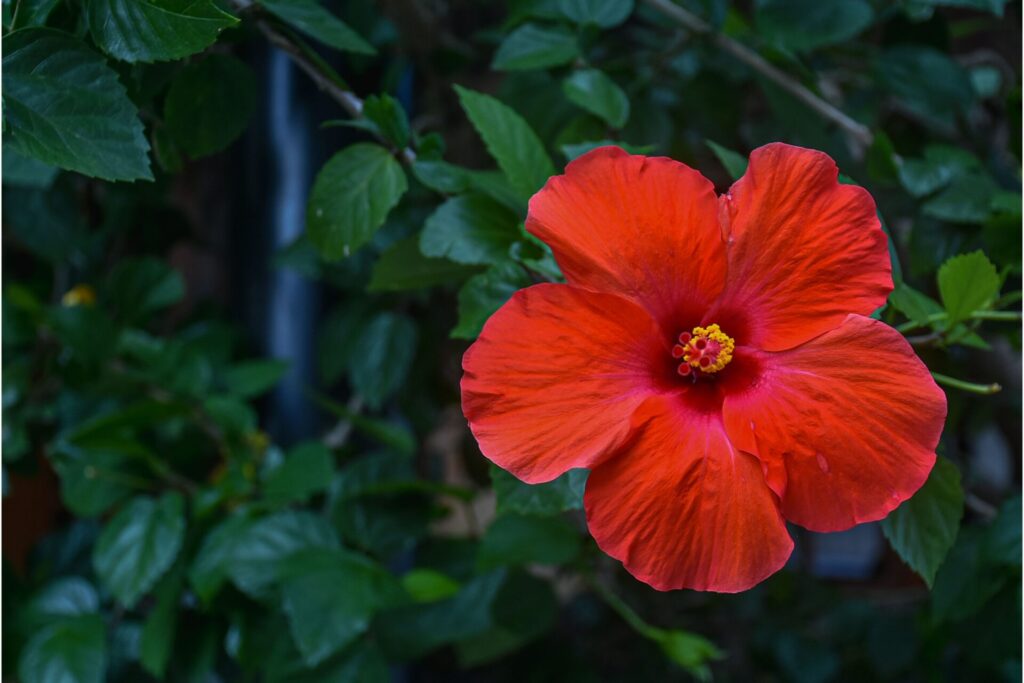
Hibiscus, with its stunning red petals, is not just a tropical delight; it’s a powerhouse of health benefits.
These edible flowers are teeming with vitamin C and antioxidants, making them effective in reducing blood pressure and supporting heart health.
Brewing hibiscus flowers into teas or infusions is not only a flavorful experience but also a refreshing way to enjoy their nutritional benefits.
From their distinctive flavor to their vibrant color, hibiscus edible flowers are a delightful addition to both your culinary and wellness repertoire.
Elderflower

Elderflowers, with their fragrant blossoms, contribute more than just a sweet aroma; they offer potential health benefits as well.
These edible flowers contain compounds that have been traditionally used for their immune-boosting properties.
Whether enjoyed in teas or incorporated into culinary creations, elderflowers bring a delicate flavor that complements their natural wellness advantages.
As you sip elderflower tea or savor dishes featuring these edible flowers, you’re not just indulging in a delightful taste but potentially enhancing your overall well-being.
Jasmine
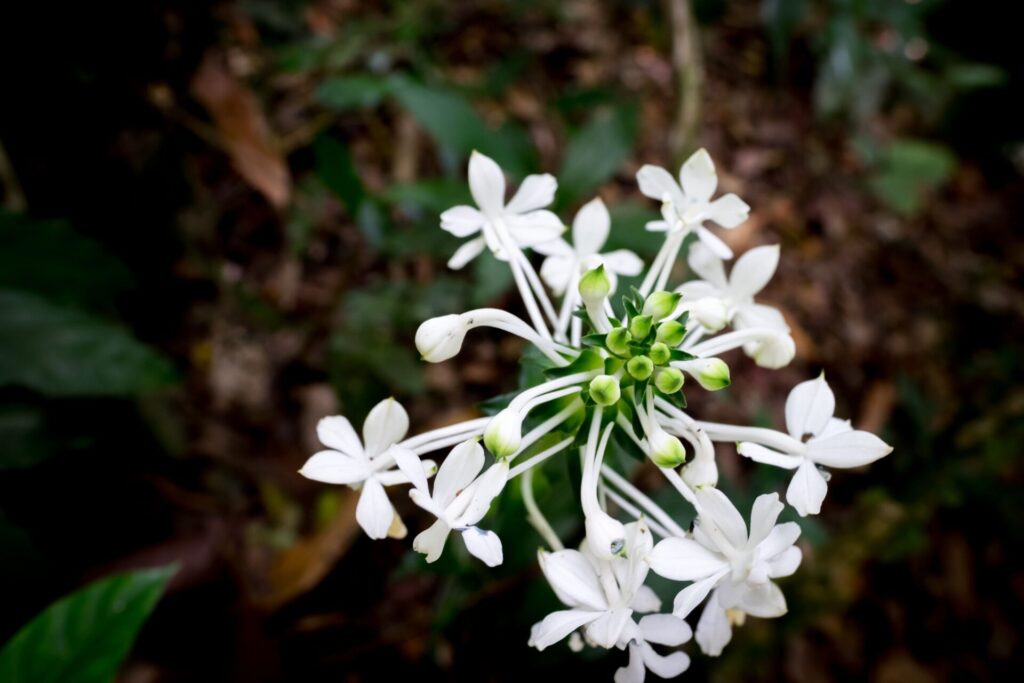
Jasmine, known for its sweet and aromatic blossoms, transcends its role as a fragrant addition and offers potential health benefits.
Edible jasmine flowers are believed to have calming properties, often used in herbal teas to reduce stress and anxiety.
The delicate floral flavor of jasmine can elevate the taste of various dishes while providing a sense of tranquility.
Whether enjoyed in a soothing cup of jasmine tea or as a subtle infusion in desserts, these edible flowers bring both sensory delight and potential emotional well-being to your culinary experiences.
Dill Flowers
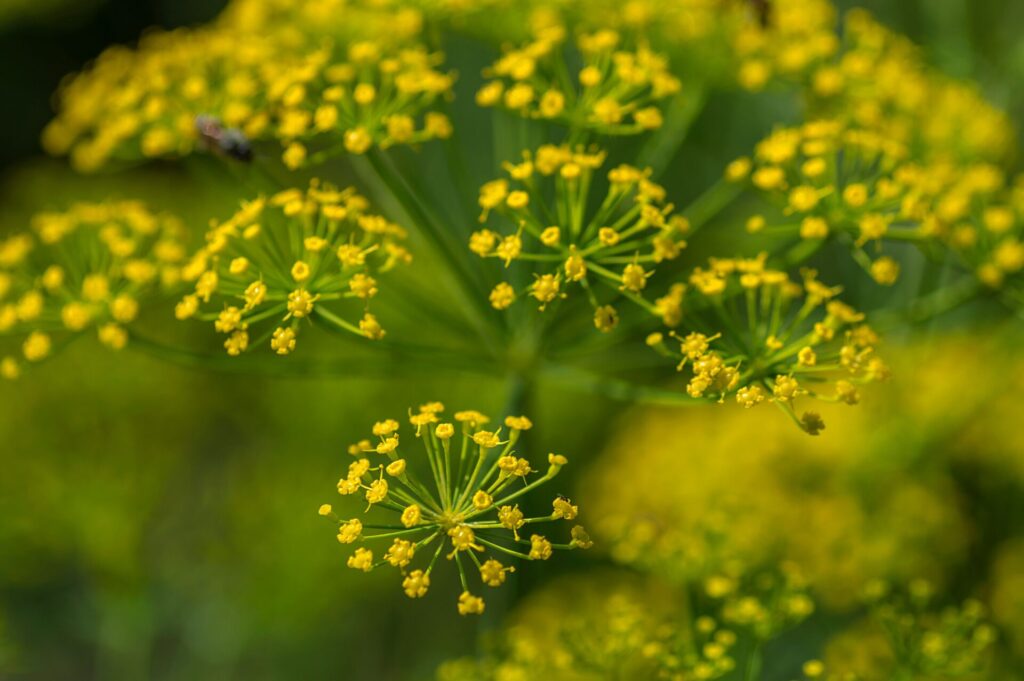
Dill flowers, often overshadowed by the herb’s leaves, pack a punch in both flavor and nutritional value.
These edible flowers contain essential oils that may aid digestion, making them a culinary asset beyond their aesthetic appeal.
With a burst of flavor that complements salads, pickles, and sauces, dill flowers prove that even the tiniest blooms can contribute significantly to your gastronomic enjoyment.
As you incorporate these edible flowers into your dishes, you’re not just enhancing the visual appeal but also introducing a subtle complexity that elevates the overall taste.
Carnation

Carnations, with their varied colors, offer not just visual allure but potential health benefits as well.
While not as commonly consumed as some other edible flowers, these blooms have been used in traditional medicine for their mild analgesic and digestive properties.
Incorporating carnation petals into your diet introduces a delightful and health-conscious choice, adding a unique flavor to your culinary repertoire.
These edible flowers, often overlooked, have the potential to contribute both aesthetically and nutritionally to your meals, proving that even the less conventional choices can bring unexpected delights to your plate.
Chive Blossoms
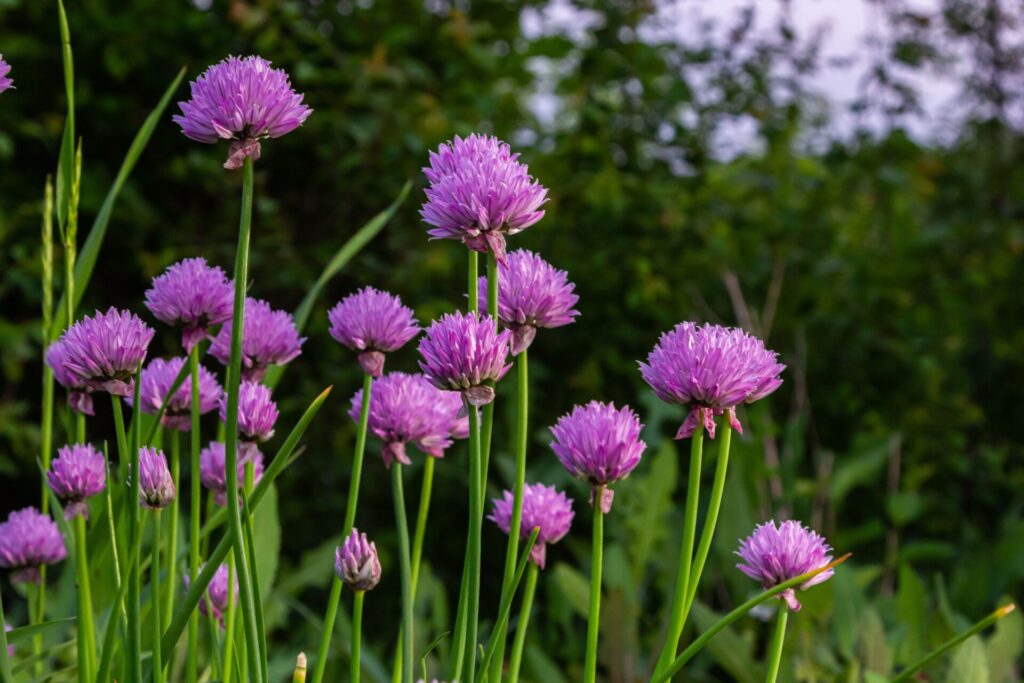
Chive blossoms, the charming edible flowers of the familiar chive herb, bring more than just a mild onion kick to your plate – they’re a delightful addition with nutritional perks.
Bursting with antioxidants like allicin, these edible flowers offer potential anti-inflammatory and immune-boosting benefits.
Sprinkle the chive blossoms over salads, soups, or your favorite savory dishes not only to elevate the taste but also to infuse your meals with a touch of natural wellness.
As you enjoy the vibrant purple hue and subtle onion flavor of chive blossoms, you’re indulging in both culinary creativity and a nutritious twist to your dishes.
Borage

Borage, boasting its vivid blue edible flowers, goes beyond being a visual treat – it’s a culinary gem with health-enhancing qualities.
These edible flowers are rich in gamma-linolenic acid (GLA), an essential fatty acid linked to skin health and potential anti-inflammatory effects.
With a subtle cucumber-like taste, borage flowers can be a refreshing addition to salads, drinks, or desserts, bringing both a unique flavor and potential health benefits to your table.
As you explore the world of edible flowers, let the distinct color and mild flavor of borage inspire your culinary adventures while subtly boosting your well-being.
Bee Balm

Bee balm, also known as Oswego tea or bergamot, not only showcases vibrant red edible flowers that attract pollinators but also offers a host of advantages for human consumption.
These edible flowers contain thymol, a compound renowned for its antimicrobial properties, and are packed with antioxidants.
The slightly citrusy and minty flavor of bee balm makes it a versatile addition to teas, salads, or desserts, providing both a delightful taste and potential health benefits to your culinary creations.
Embrace the bold red hue and distinctive flavor of bee balm as you experiment with these edible flowers in your kitchen, adding a touch of vibrancy and wellness to your meals.
Closing Thoughts
Edible flowers naturally bring color, flavor, and a hint of sophistication to our meals.
Besides their visual appeal, they offer a wealth of nutritional benefits, with vitamins, minerals, and antioxidants that can contribute to our overall well-being.
While it’s important to be aware of potential allergies or sensitivities, incorporating these natural wonders into your diet can be a simple and enjoyable way to elevate both the taste and healthfulness of your dishes.
So, the next time you spot those vibrant petals or fragrant blossoms in your garden or local market, don’t hesitate to explore the delightful world of edible flowers in your kitchen.
Your taste buds and health may just thank you for it.

